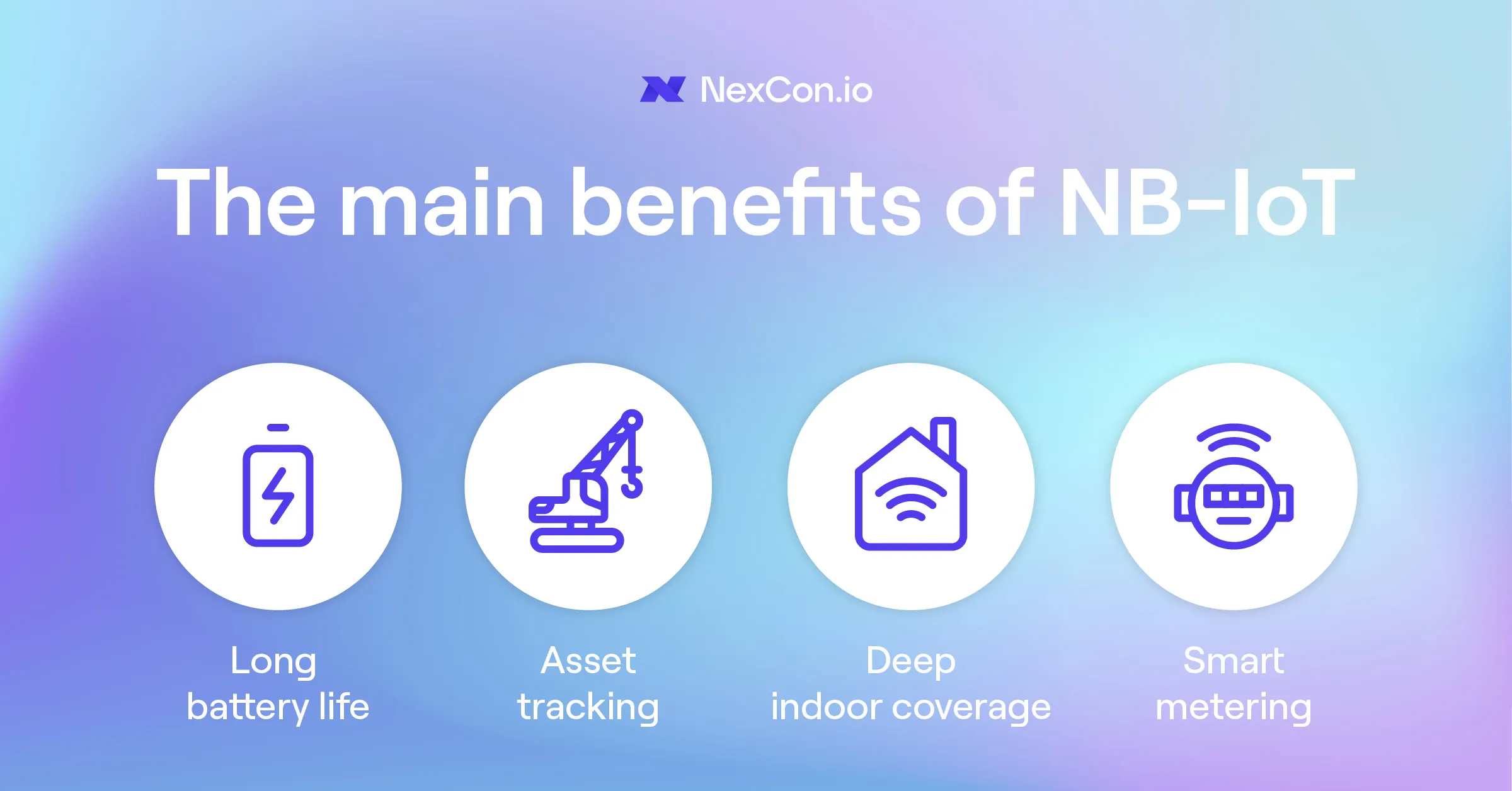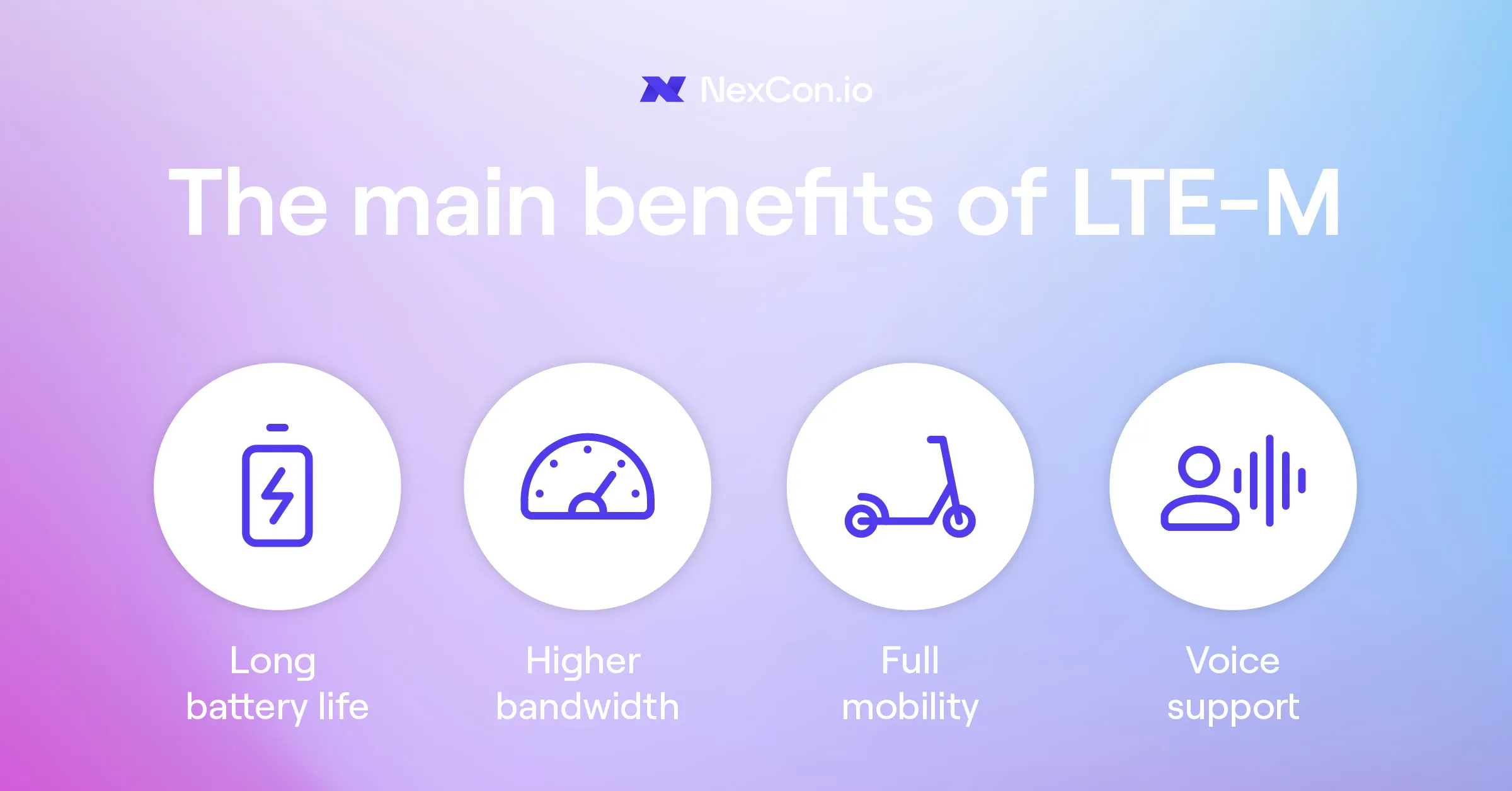LTE-M vs. NB-IoT – Understand the Strengths of Each Technology

Morten Riber | May 2, 2024

Two prominent technologies in IoT are NB-IoT (Narrowband IoT) and LTE-M (Long Term Evolution for Machines). Launched back in 2016 as 3GPP (3rd Generation Partnership Project) standards, each technology has a number of strengths, which we will discuss below.
In this post, we will go through the two terms in a way that will give you an initial understanding of the technologies and an indication of which is the best choice for your use case. If you want an in-depth review of the technologies, we recommend reading more about LTE-M here and NB-IoT here
Energy optimization
Both types of networks are so-called LPWAN (Low-power WAN) technologies with a particular focus on energy optimization. Features such as PSM (Power Saving Mode) and eDRX (Extended Discontinuous Reception) are used, which together support battery lifetimes of more than 10 years for a wide range of usage scenarios. This is especially beneficial in cases where it is costly and time-consuming to send out a technician to service IoT devices.
The difference between LTE-M and NB-IoT at a glance
NB-IoT is designed to handle small amounts of data in low bandwidth environments. This makes it particularly effective in deep indoor or remote areas where connectivity was previously a challenge. The technology is also suitable for connecting a large number of devices over a huge area. The latency is around 1.6 – 10 seconds, which means the technology does not support real-time or voice communication.
LTE-M, on the other hand, supports larger amounts of data compared to NB-IoT. The network technology also supports mobile telephony features such as voice transmission and mobility, making it ideal for use cases where devices are moving, such as tracking vehicles or portable devices. The latency of LTE-M is around 50 – 100 milliseconds, so the technology can easily support real-time communication, including voice.
Areas of application
NB-IoT is suitable for static applications where periodic data collection over long periods is required, e.g:
- Smart metering: Energy and water meters that send consumption data to energy companies to optimize resource allocation.
- Smart farming: Monitoring soil moisture and weather conditions to optimize crop production.
- Asset tracking: Monitoring assets to prevent theft or loss.

LTE-M is better suited for tasks that require greater bandwidth and mobility. Examples of this could be:
- Fleet management: Real-time monitoring of vehicles to optimize routes and improve delivery times.
- Wearables: Real-time monitoring of patients’ health status, enabling rapid response in emergency situations.
- Freight transportation: Tracking devices on swap bodies, enabling real-time tracking of goods and calculating precise arrival times.

Global IoT platform
Both NB-IoT and LTE-M are vital to the future growth of IoT, each optimized for specific needs ranging from simple data logging to advanced real-time communication.
We understand the importance of connectivity solutions that are both innovative and reliable. As a NexCon.io customer, you can buy IoT and M2M SIM cards directly in our webshop and easily manage them in the dashboard afterwards with several features available like data pools, mass editing and IMEI locking.
By choosing NexCon.io, you get unrivaled service, flexibility and quality to ensure your devices stay connected in an increasingly interconnected world.
Create a free account here or contact our sales team at hi@nexcon.io and we’ll work with you to find the best solution.